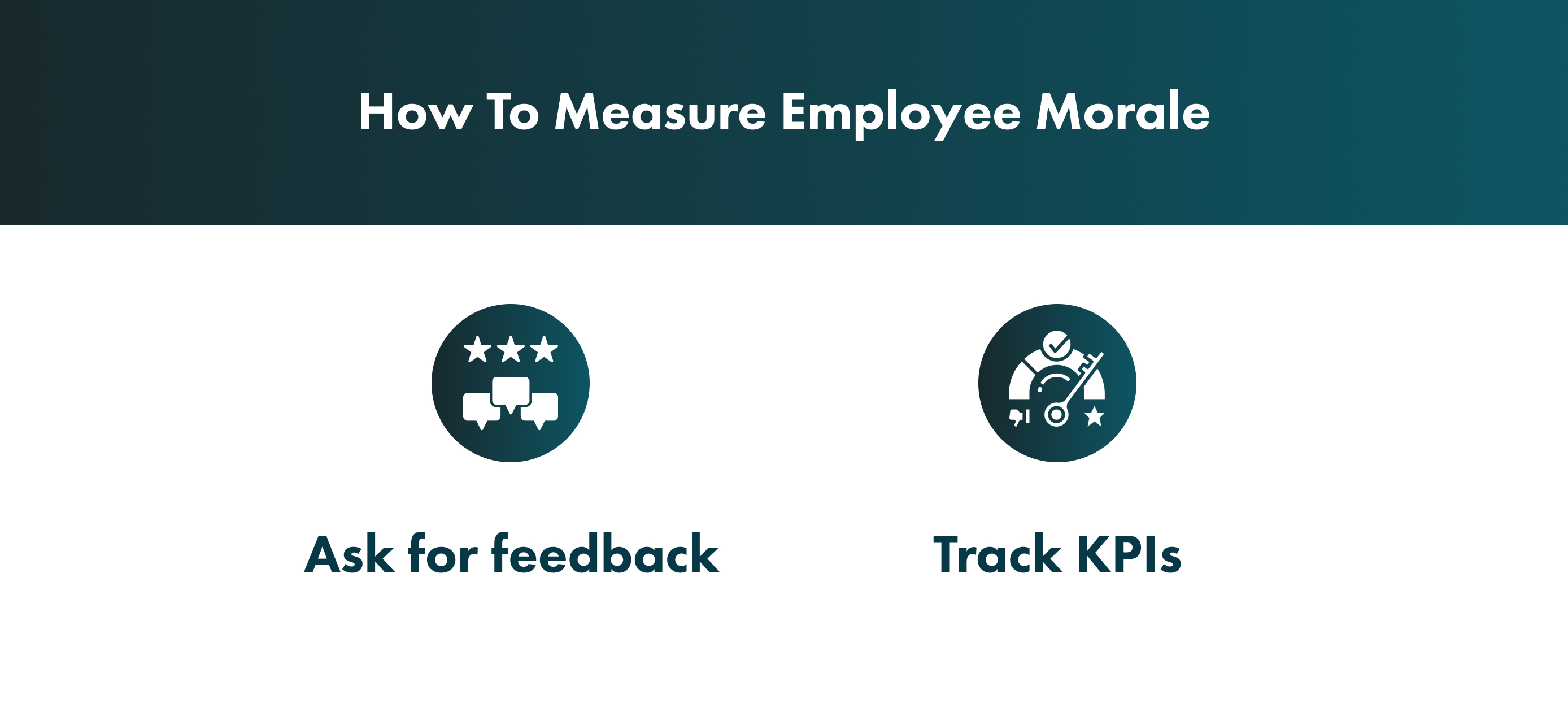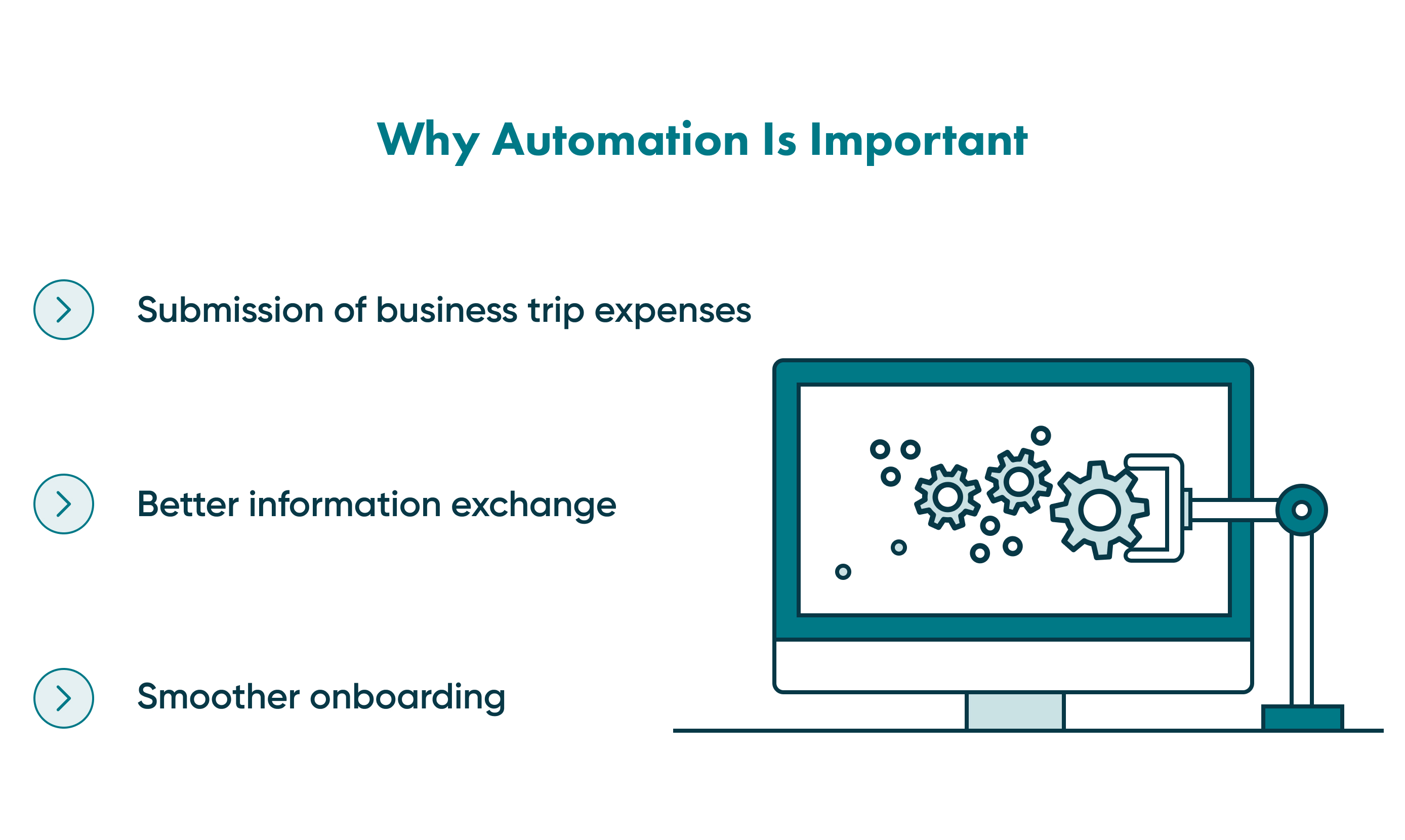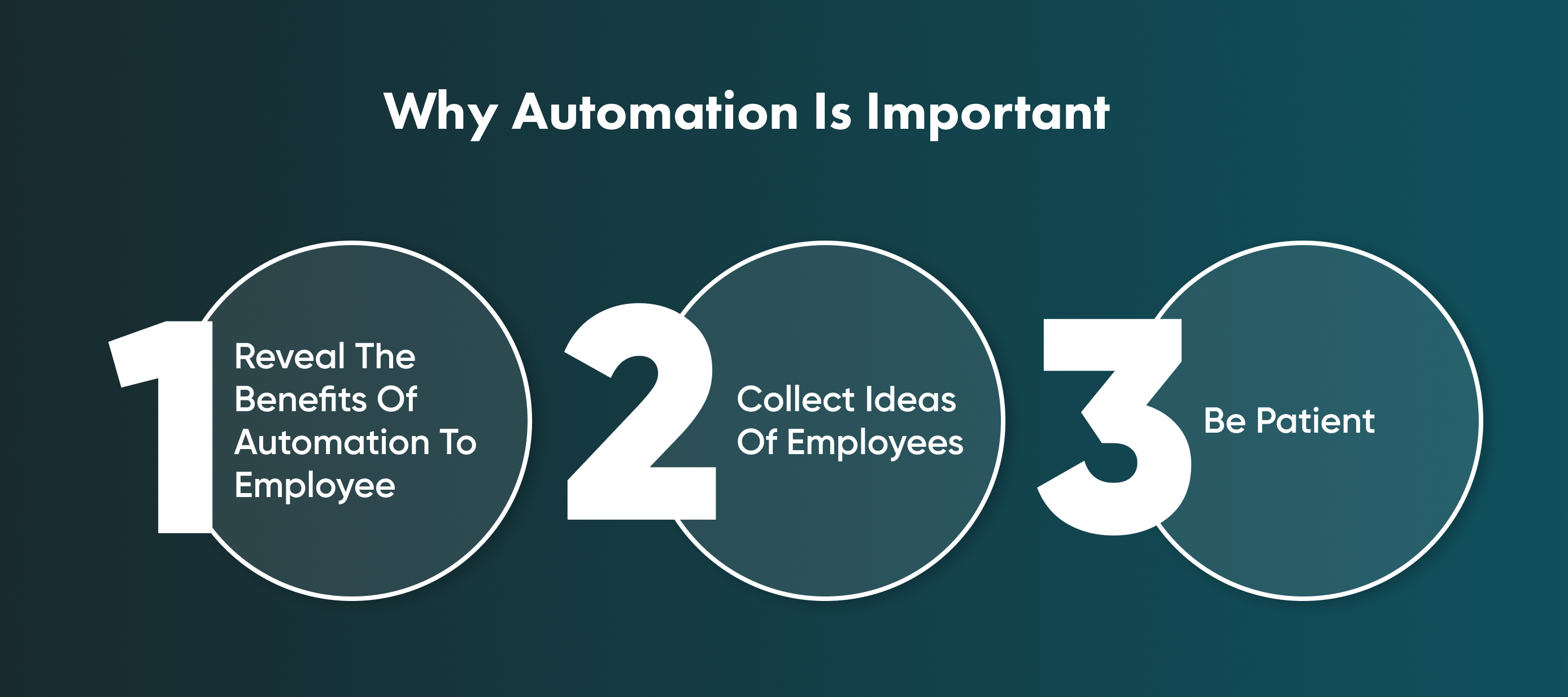How to Improve Employee Morale with Workflow Automation


How to Improve Employees' Morale with Workflow Automation
Recently, we published an article about the secrets of HR automation, providing a detailed look at the various processes involved.
This time around, we are looking at how business workflow automation softwares can help improve employees’ morale, boost motivation, and raise efficiency levels across the board.
Without further ado, let’s jump right in!
Why you CANNOT ignore automation in the HR department
System automation streamlines multiple functions and can help significantly improve overall efficiency.
However, it's also important to focus more on employees’ morale since team members build the foundation of every company — the higher their morale and productivity, the more efficient your business processes are.
Employees should be satisfied with their work environment in all aspects. Otherwise, it will have a negative impact on everything they do and potentially spread to other team members.
So, we are going to show how automation can boost your team morale, and why you need to measure it. In addition, we will show the work Go Wombat did on a project dedicated to improving staff satisfaction.
The importance of employee morale and how to ensure it remains high
We think it is necessary to show how a lack of digital automation may hinder your business.
Here are a few examples of manual tasks that slow down the rest of your business and how automation can help.
Submission of business expenses
Imagine a normal process of submitting the request for trip expenses return.
When this process is not automated, employees need to use Excel or Google Docs spreadsheets and enter up-to-date information about expenses, their contact information, names, positions, and so on.
Then they send it and wait for an uncertain period until their request is approved and costs are compensated.
Without an automated workflow, there is a relevant form where employees can enter the amount only, and other personal data will already be available.
As a result, they will have greater confidence in the system and not be afraid to spend their money, and these expenses will be compensated quickly.
Information exchange
When employees don’t have ERP (enterprise resource planning) or HRMS (human resource management system), they have to use messengers to communicate with colleagues to request information, arrange meetings, schedule a call, and organize other tasks.
Relevant systems speed up and simplify these processes, automate workflow tasks, and positively affect the morale of employees.
Go Wombat has vast expertise in HR and resource planning software development. To discover more, you can read our article about the ERP benefits and get acquainted with our case study.
Onboarding
A lack of automation not only slows down the onboarding process but also makes employees frustrated. This is because manual processes slow down the delivering of work devices, workspaces, plans, and other important resources.
The list of boarding issues caused by lack of automation is extensive — we can go on for longer. However, our primary goal is to show you that if employees don't have the right resources, it will be difficult for them to stay motivated to work.
Satisfaction feedback
Employees are proud of their skills and their experience.
However, this doesn’t mean they want to do a lot of manual and routine tasks, especially when their qualification level is relatively high and employees can fulfill complex tasks.
So, when they are stuck with multiple tedious tasks, they become doubtful about the company and whether they are doing what they should be according to their initial responsibilities.
When frustration builds up, employees lose motivation and start thinking about leaving their employer.
They have less time to focus on their direct tasks and don’t understand why they were hired. In addition, they don’t see output from their work which can lead to a feeling of stagnation.
Your employees will deliver better performance if they are appreciated. So, automating workflows and using relevant, tailor-made systems are employee morale boosters.
How does workflow automation improve employee morale and motivation?
Most employees strive to do a good job, and they need to see a result that brings some sort of revenue or profit.
However, when they don’t see an impact on the quality, their morale suffers. Therefore, your main task is to build a culture of continuous improvement and make your employees feel motivated to do their best.
Here, automation is your assistant.
Integrated automation processes reduce training time, let employees onboard and do their job faster, reduce errors, and bypass manual tasks that become automated.
Employees clearly see the company's goals and can focus on their position-related tasks to move forward. When the working process is automated as much as possible, people feel their value, and their skill is utilized correctly.
Their morale grows and turns into a solid foundation.
Furthermore, the integration of automation will help you identify the pain points of your business, correctly assign tasks, and let everyone do what they are supposed to per their responsibilities.
Why measure morale?
There is a good saying to answer this question: what gets measured gets managed.
Every business owner creates a list of tasks that must be monitored and measured to see the eventual result and the same concerns employees.
You need to measure employee morale as part of this process to maximize their productivity and ensure they work in a comfortable environment.
Apart from this, remember that you must genuinely care about their morale.
Thus, when you strive to know everything about your employees’ concerns, listen to their feedback, and then do nothing — it won’t work. It will harm your business. Dissatisfaction and disengagement will rise, and the lack of your response will have the opposite effect on morale.
Automation is an elegant way to reduce pressure on your employees and furnish them with the right resources.
Track KPIs and Ask for feedback!
What is the best way to figure out how to boost employee morale?
The answer is quite simple — ask them directly.
Your task is to create a survey and add questions you need to know. Once you receive all answers, you need to process them and decide where you will implement automated workflows.
As we mentioned above, it is not enough to listen to employees — you need to make changes in your organization so that employees will see that they are heard and valued. So, you need to automate workflows based on their feedback.
This delivers a solid boost to morale and affects employees’ performance. For example, a Salesforce report notes that employees that are being listened to can be 4 to 6 times more productive than employees whose concerns are ignored.
So this is what we have been leading to — the project Go Wombat is working on right now.
How automation contributes to quality and efficiency
A stunning 7 out of 10 businesses are experimenting with workflow automation tools in at least one business process. In industries like HR, automation workflow is a normal practice used in up to 30% of businesses processes.
In simple terms, there are many workflow automation examples that show just how much of an impact this technique can have on productivity.
It’s become a standard practice because it can help companies save a significant amount of time, with some studies suggesting that automation can improve global efficiency by more than 1.4%.
Go Wombat’s expertise in the HR digital workflow automation sector
At Go Wombat, we’ve worked on a wide range of HR projects, many of which have included automation technology.
Below, we’ll review two projects that involved the implementation of automation for HR processes, specifically, recruitment and employee satisfaction.
Cast study #1: The Right Five project
The first case we will analyze is The Right Five, which is a cloud solution specifically designed for B2B startups.

Let’s take a closer look at the project’s goals, main challenge, tech stack, and results.
The project’s goal
One major aspect that B2B companies struggle with is finding the right sales representatives. Besides being great salespeople, these individuals need to have a certain level of technical knowledge and soft skills that vary depending on the exact industry.
The Right Five Project is a great solution for these companies. In short, the platform allows for the creation of a comprehensive recruitment assessment.
This can be sent to all potential candidates via a link. Once all the respondents submit their answers, the system employs a unique algorithm to find the top 5 candidates and deliver these results to the HR team.
A challenge to deal with
Go Wombat was tasked with creating an algorithm that could help HR teams find the right candidate.
The client provided all the input data, then our crafting business analysts and solutions architect were tasked with developing this innovative calculation system.
Tech stack
Python was at the center of the tech stack used by our developers in this project. This gave our team the ability to build a highly scalable solution in a relatively short amount of time.
The frontend technology used was JavaScript, along with REST and React frameworks. Our team used AWS cloud services for this particular project, along with other technologies like Celery.
Results and current use
Our team is responsible for The Right Five’s current engine and all its features. This is an active product that’s still capable of helping its clients find the right sales team members in a few simple steps.
You can find out more about this case study by reading our full breakdown.
Cast study #2: The Cultural Calculator project

Go Wombat is working on another exciting solution that was designed for the specific purposes we mentioned — to gather employees' thoughts and opinions.
The project’s goal
The project is aimed at HR processes and is a web-based service that enables the creation and distribution of surveys.
This solution allows companies to build surveys for employees to identify their preferences, concerns, what they are satisfied or dissatisfied with, and so on.
So this is an automated system with a dashboard for statistics gathering.
Based on the received results, the system creates charts and diagrams, and you can assess all indicators in a convenient, easy-to-digest form.
Furthermore, the Cultural Calculator includes a feature to develop multi-tests for the long term — employers can build a campaign that provides for various tests which must be done within the set deadline (for example, when employees need to do tests every week or month).
Automate your workflow with Go Wombat — our services are at your disposal! Contact us
A challenge to deal with
Although the project was straightforward, it presented a complex challenge: building a comprehensive calculation for chart development.
Fortunately, our highly skilled team of developers came up with a clever solution.
Our developers developed a way to use a minimum number of queries from the database and minimum actions in Python.
These types of challenges can be helpful — they help us find creative approaches and prepare for future challenges.
Tech stack
This project applied Python as the primary programming language for back-end development and the Django framework for server creation using Python.
The front end was built using standard JavaScript language.
We used Google Forms API for making tables where answers are recorded. Also, we used the NumPy library to calculate trends in charts.
By the way, the challenge described above was solved using NumPy — our developers found the solution to get the required calculations in the data extraction stage from the database easily.
Of course, this is compatible with AWS services like S2 and EC2. S3 is used as hosting for the front end, while EC2 is for the back end.
Results and current use
Our development team has created a custom system of statistics calculation and dashboard formation for different purposes.
The system collects all data in a separate report that can be shared with users, and report downloading is also possible.
In short, the system's end goal is to assess how employees are satisfied with different situations and how specific activities impact the internal atmosphere of the company.
This is an ongoing process, and we expect to adapt our solution accordingly. You can see our detailed case study here.
3 steps to prepare your company for automation
Finally, there are many ways to prepare your company for automation to ensure that this process will be smooth and painless for your team.
However, we don’t want to overload you with tons of information, so here are 3 simple steps you can follow.

1. Discuss the benefits of automation with employees
The unknown can always be frightening.
Your staff may have doubts concerning the advantages of automation if they are not acquainted with its potential use cases of this technology.
That is why it is essential to organize discussions and meetings with employees (or arrange a meeting with heads of departments so that they can share the information in their departments), as it will help build a better understanding and increase user acceptance.
2. Collect ideas from team members
Employees understand their distinct tasks better than anyone else.
So, explain to department leaders that all automation ideas from employees are encouraged and welcomed.
Let employees show what monotonous and repetitive processes they have and what they want to change.
Furthermore, introduce a bonus or reward for an interesting suggestion on the automation process. It will motivate staff to generate productive ideas that will benefit the rest of the company, so it’s only fair they get a reward.
3. Be patient with the implementation of digital workflow automation
The third step is to mitigate the fact that every new process in the company won’t be met by the entire staff with optimism and joy.
It is entirely normal, but this stage may harm morale. Finding tips to instantly boost employee morale can contribute to a happier workforce. But, you still need to implement systematic long-term changes to keep team morale elevated.
Some people will try to resist and struggle because of it, so you and the management team should have a strategy to deal with people's skepticism and motivate them to move forward.
That is where you must gain and develop one of the most valuable soft skills — the ability to listen and make real changes based on this feedback.
Unlock Success with Premium Software Development
Contact us


Ready to automate tasks in your organization? Go Wombat is here to help
We hope that this article provides you with the information you need to understand the benefits of automation — especially when you consider the psychology of communication between employees and employers.
However, as you can see, even here, software automation can help build better relationships with staff.
Automation changes many things. It can help your employees achieve high morale and smoothen out a wider range of business processes.
Process automation can benefit your company as soon as it's implemented. Are you looking for a partner to help you automate processes in your business right now? Contact us and book a consultation today.
How can we help you ?





